Building Beasts With Godzilla: King of the Monsters‘ Production Designer
There hasn’t been a film that has lived up to its title quite as thoroughly as Godzilla: King of the Monsters. In director Michael Dougherty’s Kaiju cage match, Godzilla goes clawed toe to clawed toe with some of the biggest beasts on the planet, including King Ghidorah, a three-headed dragon whose provenance is one of the film’s many twists. Every time these monsters clash—and the film doesn’t skimp on these colossal skirmishes—they do so in increasingly inspired locations. From an icy tundra to downtown Boston, King of the Monsters offers up some of the biggest set pieces in Godzilla franchise history.
Production designer Scott Chambliss was one of the key architects to these battles, as well as the man who made sure every location, from the secretive research agency Monarch’s many hidden labs to a flying fortress, to re-creating—and destroying—Boston’s Fenway Park looked picture perfect. Chambliss gave us a crash course on how you design a film in which monsters tear everything apart, including each other, in scene after scene.
Let’s talk about the various locations where the big Kaiju brawls happen—how much of these, from the icy location where King Ghidorah and Godzilla first fight, to downtown Boston, were practical sets?
Each Kaiju moment has a physical set element that enables human action to take place in a practical environment. For the Antarctica sequence, we filled a vast soundstage with a snowfield set, where at one end sat the large entry structure where we see the humans’ characters traveling to and from the subterranean ice world where Ghidorah is held in stasis. At the opposite end of this stage, we placed the crashed transport plane that is featured late in the sequence. On a different stage, we built the large interior of the ice cave space, which included the freight elevator and landing platforms, the network of catwalks, covered tunnels, and staircases as well as the work platforms at the ice wall.
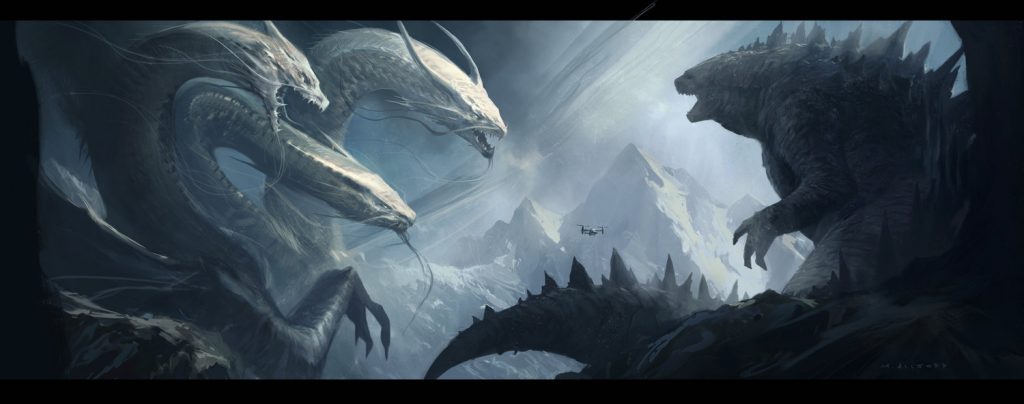
For the start of the Rodan vs Ghidorah sequence, we used a central plaza and its adjacent streets in the heart of Mexico City as our practical location for panicked hoards of people attempting to escape.
The finale Kaiju sequence set in Boston had multiple sets. We created a back lot baseball field we created for Fenway Park, and on sound stages, we built the stadium’s broadcasting booth and adjacent corridor sets as well as their destroyed versions. Both our San Francisco cityscape in ruin and Boston cityscape in ruin sets we created on our back lot, and we used a residential street in Atlanta, Georgia for the family home exterior and interior in both it’s before and after Kaiju action states.
A lot of the film takes place in various flying aircraft and vessels—what were the challenges of designing for these spaces?
Creating a fresh feel for aircraft in a story like this that is accessible and appropriate but somehow unique for the audience is always a challenge. It becomes ever more so as the number of such crafts I design continues to pile up. In some ways I think the Argo carrier plane design might be my best flying vehicle of them all as it’s a synthesis of everything I’ve learned over the years in creating such environments, beginning with my first Star Trek film.
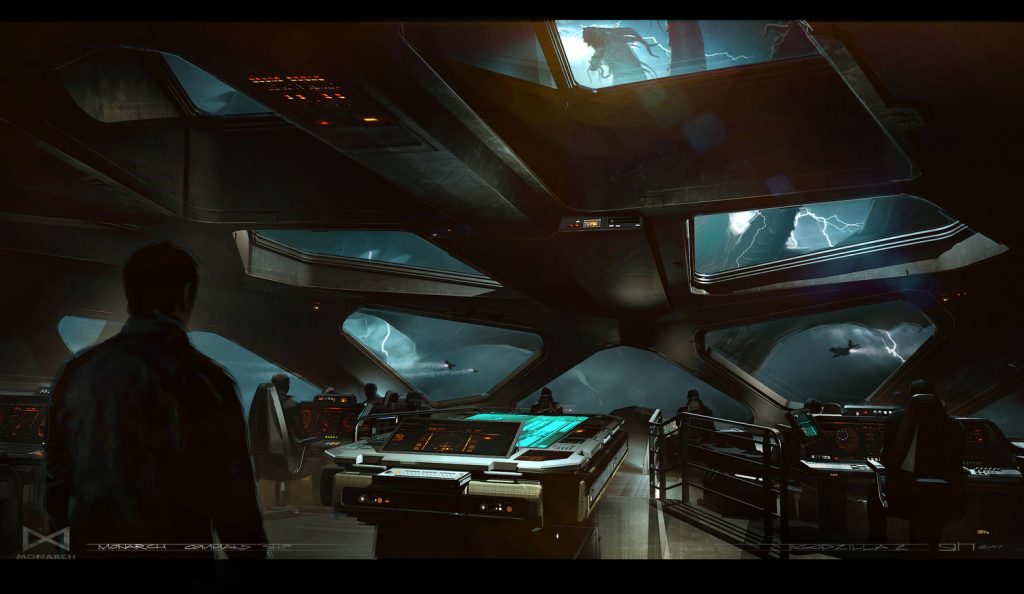
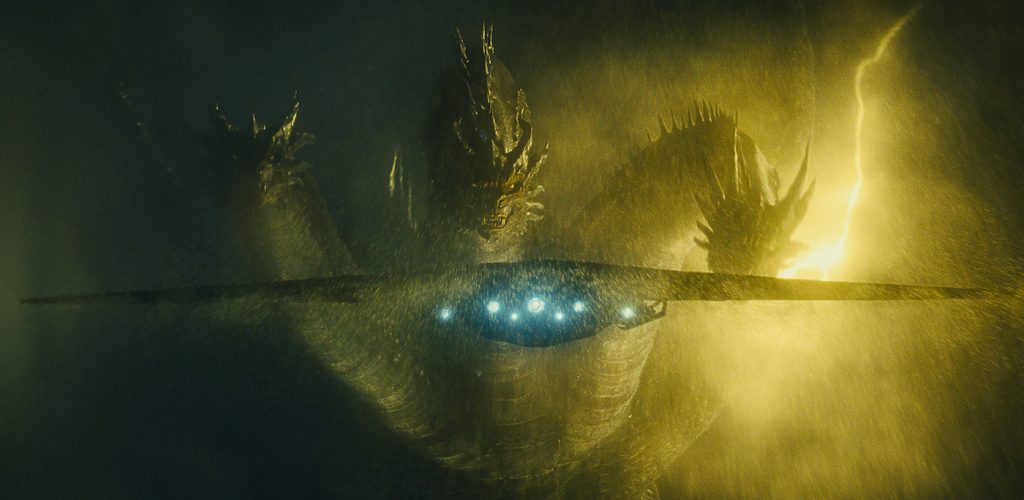
Each monster gets a really cool initial set—Mothra in that lab in China, Monster Zero frozen in a massive block of ice, Rodan coming out of the volcano—can you tell me a bit about the design work that went into these very different origin points?
In a situation like this, creating a vivid contrast in the environments for each major character is a big part of the fun for a designer. As our writer/director Michael Dougherty is a lifelong fan of monster movies, he and his talented writing partner Zack Shields had already established the notion of vividly different locales as a fundamental ingredient of our storytelling. So it became our collaborative task to define in detail what we wanted them each to be, and how we wanted to use them as opportunities to reveal something specific about the nature of the monsters. This whole evolutionary process of visual storytelling requires is the main reason why my profession is such a great—and addictive-—one for a creative person.
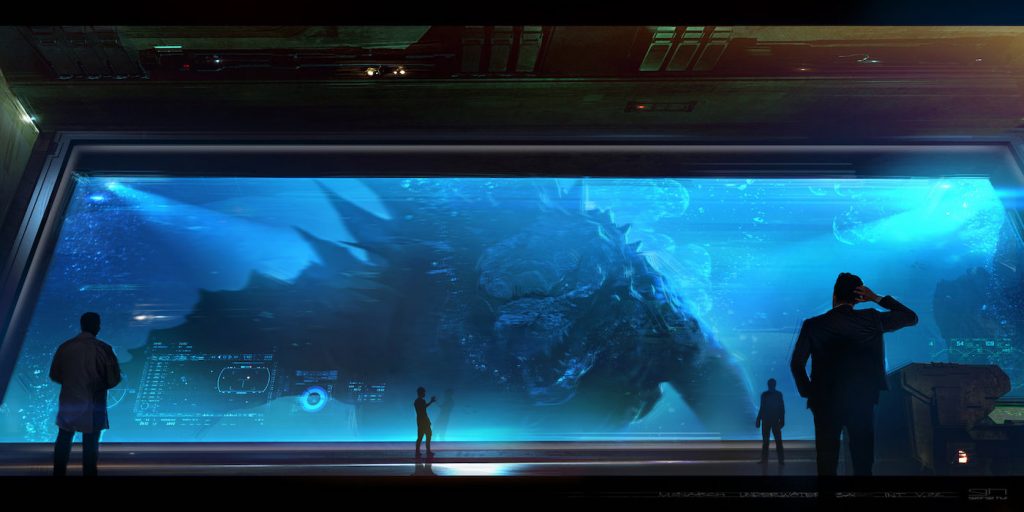
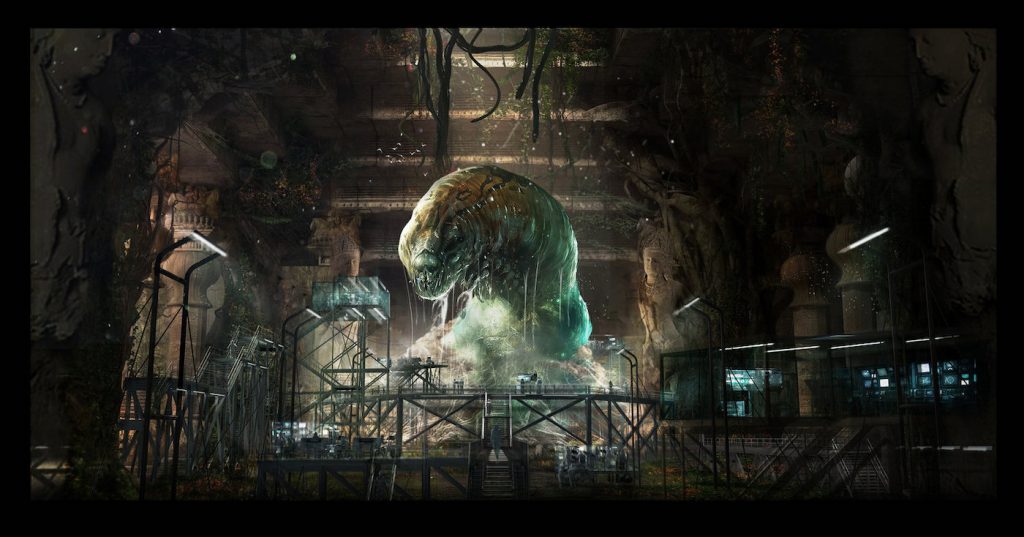
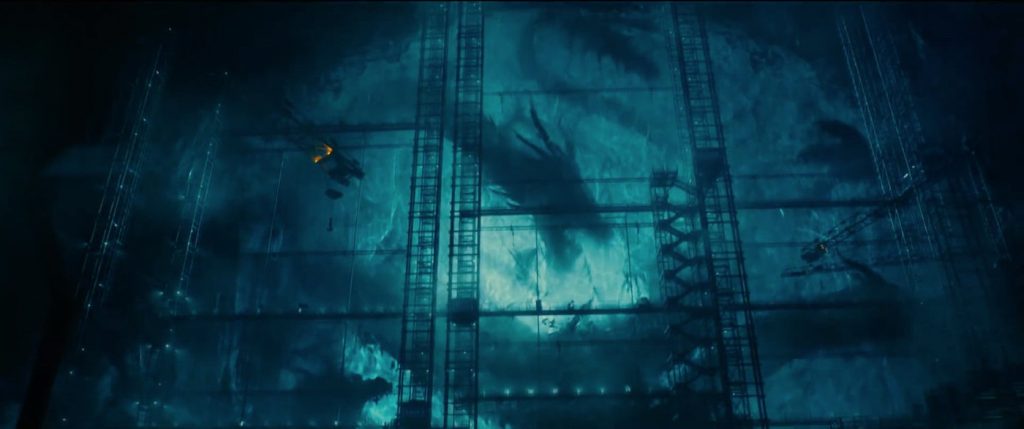
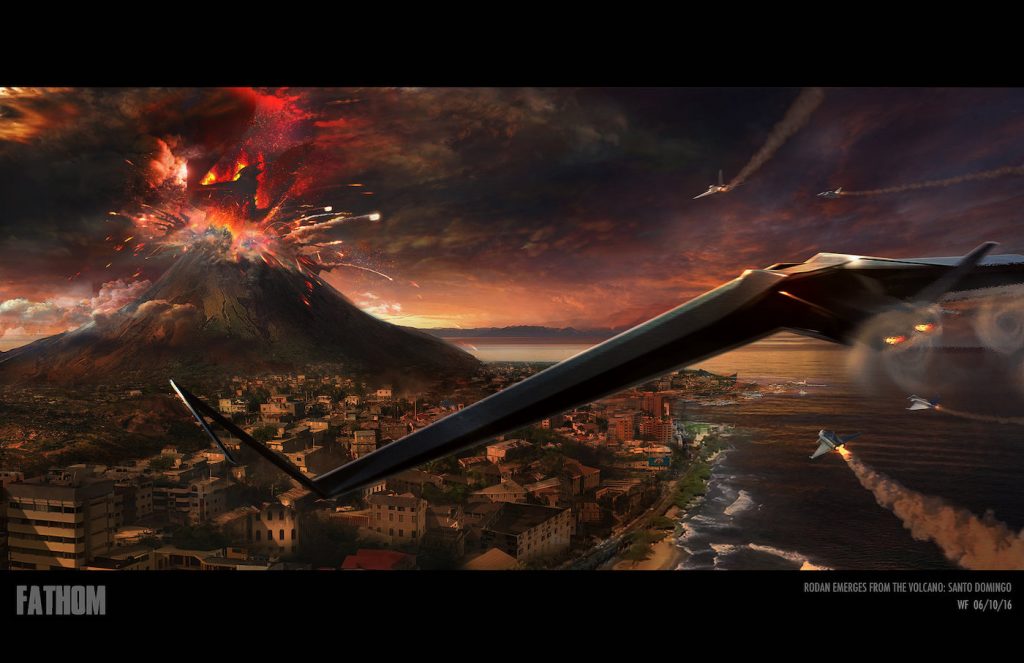
Can you tell me about your initial conversations with Michael Dougherty about what these spaces would look like, and how they’d call attention to the story itself?
It becomes a very long ongoing process, and you start by casting a very wide net when drawing in visual points of reference to consider. In the process, I collect thousands of images for our reference arsenal, which evolve into the visual building blocks of our story. I also hire a team of concept illustrators to collaborate directly with to achieve our specific design ideas as they evolve in specific directions. These illustrators are extraordinarily talented folks who are able to communicate ideas in an awesomely articulate visual manner, and without them, we production designers who create fantasy or historical worlds for films would be unable to do our jobs.
How challenging is it to design spaces for a film that will be inhabited by colossal CGI creations?
No more nor less challenging than designing spaces for any other story that requires a grand and imaginative visual scope for its tale. Present day reality-based tales are a different kind of project entirely of course, and for some reason, I am rarely hired to do those anymore. Go figure!
What sequences in King of Monsters are you most proud of? Where the effects of you and your team’s work felt realized and impactful?
That’s an easy one. Creating the Monarch underwater headquarters, which filled an entire soundstage, was a hugely important environment to design and one that I loved creating. Though you don’t see it in much detail in the film, it is a visual manifestation of the idea of man’s brain and brawn negotiating its very existence and purpose a huge, raw, and dangerous natural world.
The other set I’m especially proud of…although truly mostly in retrospect after seeing how it plays in the film…is the Argo carrier plane, for the reasons I mentioned previously. If any of your readers are curious, original concept art as well as actual set photos of these designs and most of the rest of my design work from the movie- including the monsters- can be seen on my professional website.
Did you reference any particular previous Godzilla films aside from the 2014 reboot? Were there any other monster films you used as a touchstone?
We looked at virtually every Godzilla movie in the vault as a historic reference point, but we worked toward creating our own contribution that wasn’t referencing the other interpretations in any meaningful way. That’s another great part of my job: sometimes in beginning a new project, the first thing you realize is that in this particular case the world is your oyster. And that’s a fine awareness!
Featured image: Caption: (L-R) KING GHIDORAH and GODZILLA in Warner Bros. Pictures’ and Legendary Pictures’ action adventure “GODZILLA: KING OF THE MONSTERS,” a Warner Bros. Pictures release. Photo Credit: Courtesy of Warner Bros. Pictures



